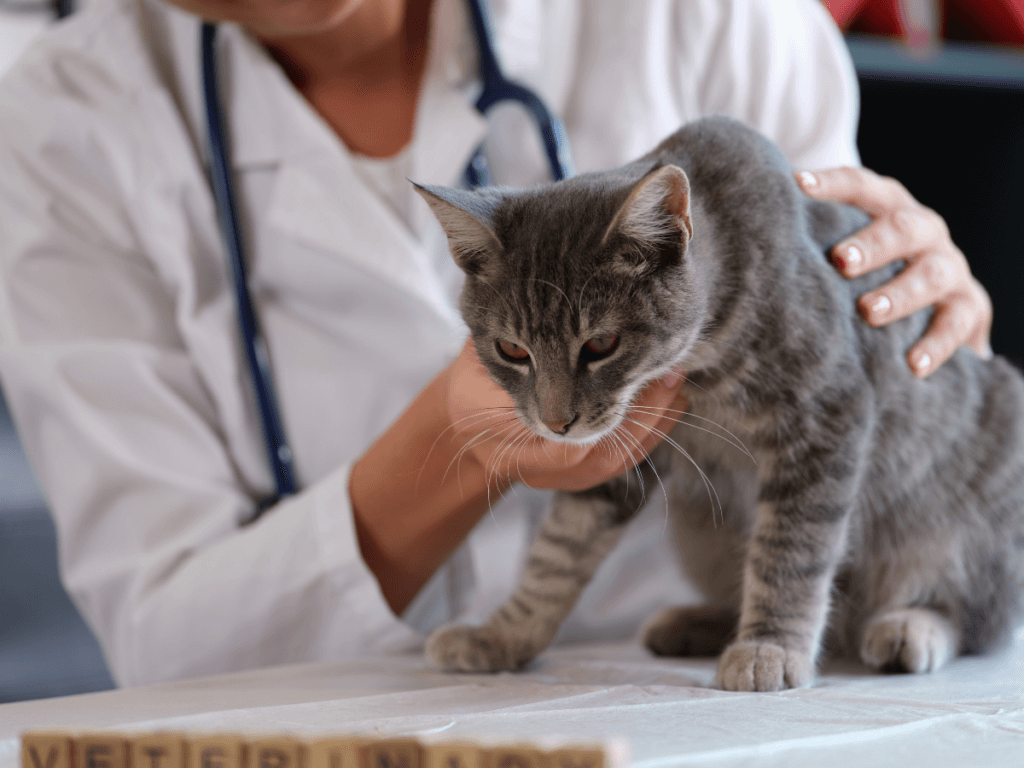Heatwaves bring with them a lot of fun activities, but they also pose a significant risk to our feline friends. Just like humans, cats can suffer from heat stroke, a condition caused by a dangerous rise in body temperature. In this article, you’ll learn about the symptoms of heat stroke in cats, how to prevent it, and the steps you should take if your cat is affected.
Post Contents
Toggle
What Is a Heat Stroke?
A heat stroke, or hyperthermia, occurs when a cat’s body temperature elevates to a level that can cause illness or organ dysfunction. It’s critical to remember that cats do not sweat like humans do – they only sweat through their paws and primarily regulate their temperature by panting. Therefore, hot environments can be much more dangerous for them.
Symptoms of Heat Stroke in Cats
Recognizing the symptoms of heat stroke could save your cat’s life. The signs can escalate rapidly from mild to severe and may include:
- Excessive Panting: While cats normally pant to cool down, excessive panting is a warning sign.
- Restlessness: An uncomfortably hot cat may show signs of agitation or move around constantly in search of a cooler spot.
- Bright Red Gums: The gums may turn bright red as blood vessels dilate in response to the heat.
- Trembling: This could be a sign that your cat’s body is struggling to regulate its temperature.
- Vomiting or Diarrhea: Heat stroke can upset a cat’s stomach resulting in gastrointestinal distress.
- Lethargy or Weakness: If the cat is suffering from heat stroke, it may seem unusually tired, limp, or uncoordinated.
- Collapse or Loss of Consciousness: These are severe signs indicating that the cat needs immediate veterinary attention.
If you notice any of these symptoms, it’s vital to act quickly and cool down your cat while seeking veterinary help.
Preventing Heat Stroke in Cats
Prevention is always better than treatment. To prevent heat stroke in your beloved pet:
- Provide Access to Water: Always make sure your cat has plenty of cool, fresh water.
- Keep Your Home Cool: Use air conditioning, and fans, or keep your blinds closed during the heat of the day.
- Limit Exercise: During hot weather, limit your cat’s physical activity, especially during the peak heat hours.
- Create Shady Spaces: Make sure there are plenty of shaded areas where your cat can lie down if they go outdoors.
- Never Leave Your Cat in a Parked Car: Temperatures can soar to dangerous levels within minutes, even with the windows open.
By taking these precautions, you can greatly reduce your cat’s risk of experiencing heat stroke.
Treatment for Heat Stroke in Cats
If you suspect your cat is experiencing heat stroke, immediate action is required:
- Move your cat to a shaded and cool area.
- Apply cool water to the fur, especially around the neck and head. Do not use ice water as it can cause shock.
- Allow small sips of water, but don’t force your cat to drink.
- Use a fan to promote evaporative cooling.
- Contact your veterinarian or emergency pet clinic immediately.
Time is of the essence when treating heat stroke, so don’t delay getting professional help.
Long-Term Complications and Recovery
Recovery from heat stroke can vary based on the severity of the condition and how quickly treatment began. Cats can suffer long-term damage to organs like the brain, kidneys, and liver from high body temperatures, and they may require ongoing treatment.
Monitoring your cat closely in the days following a heat stroke episode is critical to ensure they are recovering as expected. Follow all instructions your vet provides and do not hesitate to call them if you have concerns about your cat’s health.
Conclusion
Understanding the symptoms of heat stroke in cats and taking steps to prevent it can help ensure your pet enjoys a safe and comfortable summer. If you’re proactive about keeping your cat cool, supplying plenty of water, and recognizing the warning signs, you can protect your furry friend from the dangers of heat stroke. However, should the worst happen and you suspect your cat is suffering from this condition, act swiftly and seek veterinary care immediately.
Remember, our pets rely on us to keep them safe and healthy. By becoming educated on potential health risks and knowing how to respond, you’re providing the very best care for the feline member of your family.
Stay cool and keep your pets even cooler!


